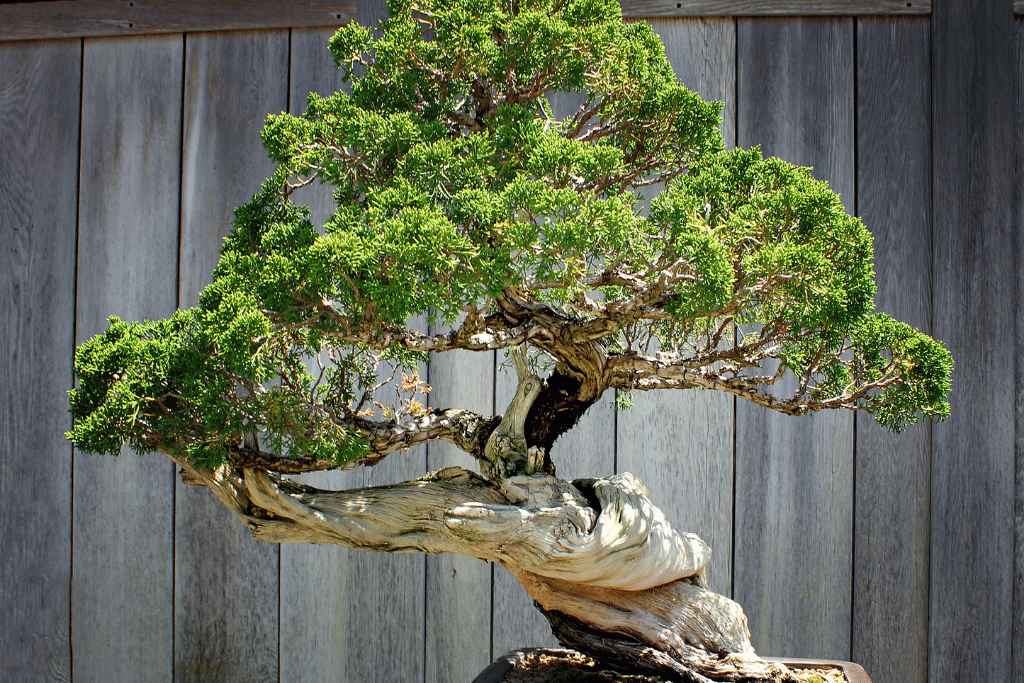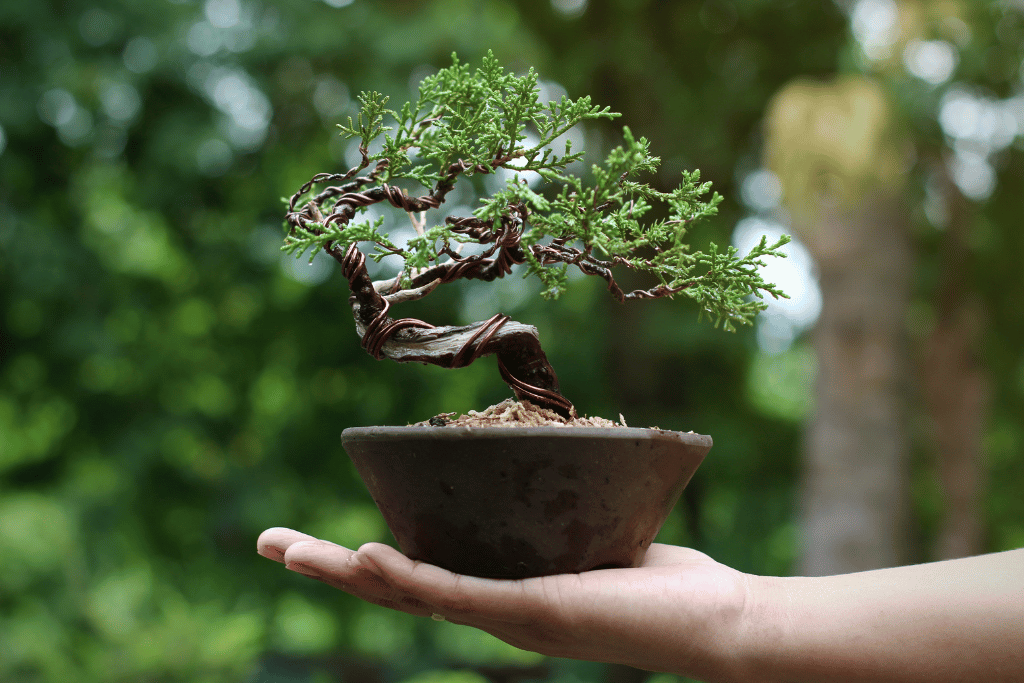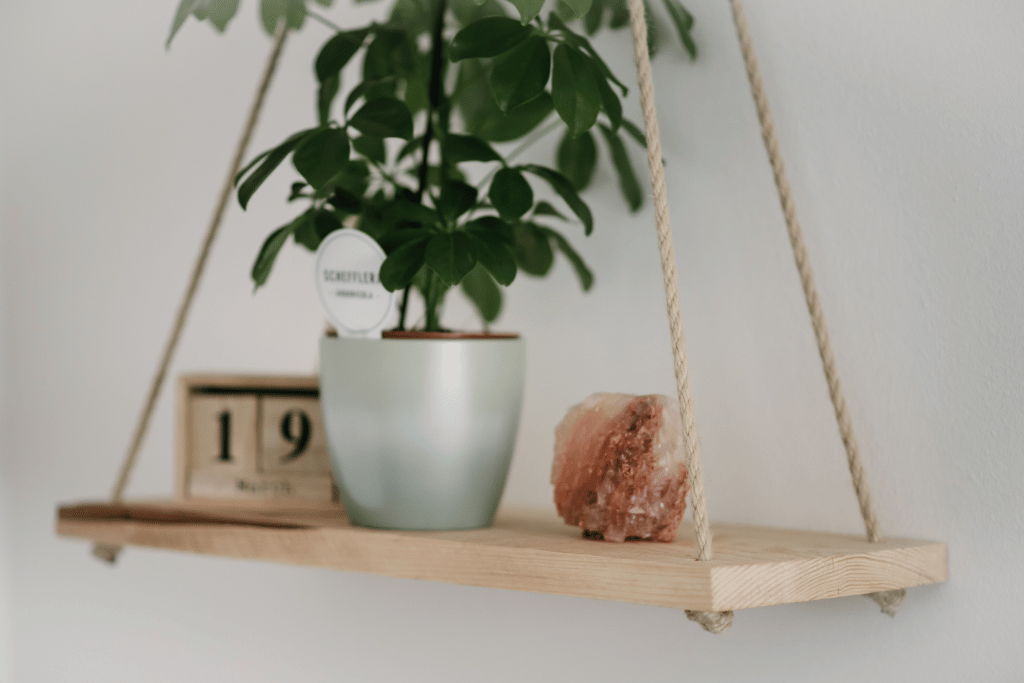
Imagine walking through a garden, your eyes are immediately drawn to this delicate, yet resilient dwarf Japanese garden juniper tree. Its elegant branches twist and turn, adorned with tiny needle-like leaves that create a soft, almost fluffy texture. This tree is truly a work of art. What if you could have this tree in your abode? It’s possible!
The dwarf Japanese garden juniper tree is a slow-growing coniferous evergreen tree that originated from Japan. This tree stands at a remarkable 2-3 feet tall, and flaunts its 4 foot wide majesty. It’s the perfect size for any garden, or to serve as an eye-catching centerpiece to a larger landscape design.
It also has a unique quality – capable of fitting in with any style you choose! It can be cultivated as a regular tree, as a bonsai or even in a container. Its petite size and resilience make it an amazing pick for those wanting to bring the essence of Japan into their garden.
What Does a Dwarf Japanese Garden Juniper Tree Represent?

The dwarf Japanese garden juniper tree is more than just a beautiful addition to your garden. It also holds deep symbolic significance in Japanese culture. In Japan, the Juniper tree represents longevity, strength, and purity. It is often associated with the New Year and is used in traditional purification rituals.
The twisted branches of this tree are also said to represent the twists and turns of life. They serve as a reminder that life is full of challenges and obstacles, but we can learn to navigate them with grace and resilience.
My Personal Experience of Landscaping Dwarf Japanese Garden Juniper Tree

The dwarf Japanese garden juniper tree is a sight to behold! Like some kind of Marilyn Monroe in the gardening world, it’s captivating and stunningly gorgeous. No wonder all the landscapers and gardeners are totally smitten with this tree.
But let’s be real here, landscaping can be a drag. Who would want to be out there in the sun, sweating away, digging holes and lugging around heavy bags of soil? Not me! That’s why I decided to get myself a dwarf Japanese garden juniper tree for my very own backyard escape – so I can have the beauty and none of the effort.
Here’s what happened next. I had been wanting to spruce up my backyard for the longest time, but it always seemed like an impossible task. Until one day, when I saw a photo of this utterly stunning garden with an insanely beautiful tree at its center. After some detective work, I figured out that it was none other than a dwarf Japanese garden juniper tree.
So I went to the garden center and picked one up for myself. It was tiny, but something about it pulled me in – like a magnet, if you will. But instead of just planting it in the ground, I had bigger dreams for this tree. So I got creative. I found an awesome container, filled it with a well-draining soil mix, threw some rocks in it for extra drainage and then settled my tree snugly at the center. I surrounded it with some decorative rocks and voila! My very own backyard masterpiece was ready for its grand debut.
But I didn’t stop there – I decided to add a bit of oomph to my new centerpiece. I built a little Japanese-inspired garden bed around the tree and added some rocks, ornamental grasses and colorful flowers. Now it looks like something out of an old painting! Every time I pass by it, I can’t help but smile.
So don’t be overwhelmed – now you too can have a magically stunning garden in no time. Just lay your hands on a dwarf Japanese garden juniper tree and let the rest take care of itself.
Dwarf Japanese Garden Juniper Bonsai: The Cutest Tree You’ll Ever Own

Bonsai trees have been around for eons, first making an appearance in China before being embraced by the Japanese centuries ago. An icon of artistry, the dwarf Japanese garden juniper bonsai is one of the most popular versions among plant lovers and looks simply stunning.
Here are some additional details about this little cutie:
Lifespan:
With proper care, a dwarf Japanese garden juniper bonsai can live for decades. Some have been known to live for up to 100 years!
Growth rate:
The bonsai’s slow growth makes it a breeze to keep in check. Just remember – never snip off more than one-third of the foliage at once, or else your tree will suffer! This is an important rule to bear in mind when tending to your bonsai tree.
Indoor vs. outdoor:
The dwarf Japanese garden juniper bonsai can be your new bestie indoors; just don’t forget to give it plenty of light and breezy air. If you decide to take your little greens outside, make sure they stay safe from drastic temperature swings like frost and heatwaves.
Dwarf Japanese Garden Juniper Container Gardening: Little Tree, Big Personality

Dwarf Japanese garden juniper is a popular choice for container gardening because of its stunning appearance and ease of maintenance. With its striking blue-green foliage and compact, mounding habit, this juniper adds a touch of elegance and sophistication to any patio, balcony, or outdoor space.
Here is a step-by-step process for successfully growing dwarf Japanese garden juniper in a container:
Step#1 – Choose the right container:
A dwarf Japanese garden juniper won’t fuss too much – just give it a container that can drain well. Twelve inches in diameter and depth? Piece of cake!-cotta, ceramic or plastic – the options aplenty.
Step#2 – Choose the right soil:
Use a well-draining soil mix that is formulated for container gardening. You can find these mixes at any garden center or nursery. Avoid using heavy soil or garden soil, as these can retain too much moisture and cause root rot.
Step#3 – Add drainage material:
Place a covering of gravel or busted clay pieces at the bottom of the can for reliable drainage and to avert soil from being compressed.
Step#4 – Plant the juniper:
Carefully extract your dwarf Japanese garden juniper from its original pot and detangle any twisted or circling roots. Put it in the center of the container, then sprinkle soil all around, patting down delicately. Ensure that the earth level is around 1 inch below the edge of the vessel. That’s all you need to start!
Step#5 – Water thoroughly:
Once planted, make sure to drench the juniper thoroughly and eliminate any air pockets from the soil. Take care not to give too much water – drowning it will only cause root rot. Allow the land to become a tad dry in-between each watering session. That ought to do the trick.
Step#6 – Provide adequate light:
It prefers full sun to partial shade. Place the container in a location that receives at least 6 hours of direct sunlight each day.
Step#7 – Fertilize as needed:
Use a slow-release fertilizer formulated for evergreens in the spring, and again in midsummer if necessary. Follow the manufacturer’s instructions for application rates.
Step#8 – Prune as needed:
It requires minimal pruning, but you may need to shape it occasionally to maintain its compact form. Prune in the spring or early summer before new growth appears.
Step#9 – Protect from winter weather:
If you live in a cold climate, protect the container from winter weather by wrapping it in burlap or bubble wrap, or move it to a sheltered location.
Frequently Asked Questions (FAQ)
Can you keep a dwarf Japanese garden juniper in minnesota?
Yes, you can keep a Dwarf Japanese Garden Juniper in Minnesota as long as you provide it with the proper care. Since Minnesota has cold winters, you may need to protect the tree from frost by moving it indoors or wrapping it in burlap. The tree also prefers cooler temperatures, so make sure it’s not exposed to heating vents or air conditioning units that may cause sudden temperature changes.
Why is my dwarf Japanese garden juniper turning brown?
The browning of your Dwarf Japanese Garden Juniper might be due to several potential causes. A frequent reason is overhydration, leading to root rot and the death of foliage. Remember to only water when the soil’s top inch is dry and make sure you use a nice draining soil mix so that too much water isn’t an issue.
Another potential problem is an absence of appropriate amounts of light, which this tree needs to stay healthy. Pests and diseases such as spider mites, scale insects, or fungal infections can also be the root cause of its browning so give it a check-up every now and then for any indications of disease or infestations and react accordingly.
How slow do dwarf Japanese garden juniper grow?
Dwarf Japanese Garden Junipers might seem slow-growing, with their mere few inches of yearly growth. But the rate of growth can be swayed by things such as temperature, lighting and care. With some dedication, you can train this tree into an exquisite bonsai that will live on for years to come! All it takes is a little effort and understanding. So, why not give it a go? You never know what you may end up with.
What are some common issues that can arise during dwarf Japanese garden juniper care?
Some common issues that can arise during Dwarf Japanese Garden Juniper Care include overwatering or underwatering, pests such as spider mites or scale insects, fungal diseases like root rot or blight, and improper pruning techniques. It is important to monitor the plant’s moisture levels, inspect for pests and diseases regularly, and use proper pruning methods to maintain the health and appearance of the plant.



